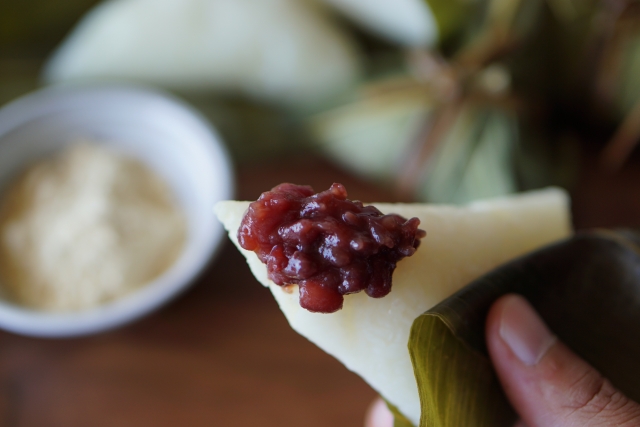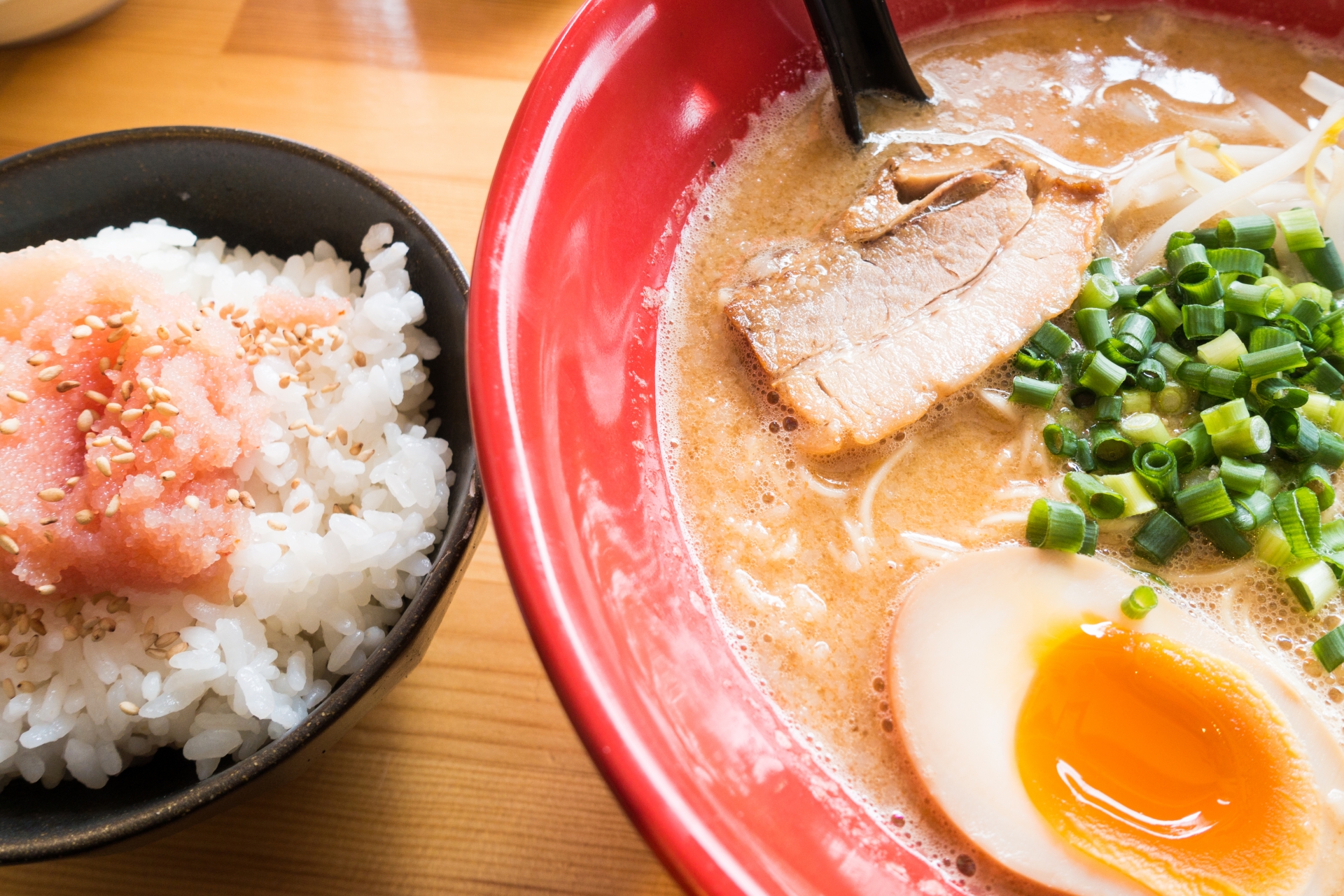Trying new food is one the best parts of traveling, especially when you visit a country or area that you have never been to before. Japan boasts a unique, attractive food culture that fascinates tourists from all over the world. What you can try varies depending on when and where in Japan you visit. Located in the northern part of Kyushu Island, Fukuoka is well-known as the largest city in the Kyushu area with an amazing food culture. There are wide varieties of local specialties which are relatively affordable and easy to find at casual local restaurants and shops. Here is our list of some great Fukuoka dishes that you can’t miss!
1. Mentaiko (spicy cod roe)
Mentaiko is often translated as “Spicy cod roe” in English which is loved as a symbolic food in Hakata city, Fukuoka prefecture. As the name implies, it is basically fish eggs seasoned with spicy chili peppers. Mentaiko delivers a unique, addictive texture which pops in your mouth! (It is probably easy to imagine if you have ever tried “Ikura”, salmon roe at sushi restaurants!) The spicy, flavorful taste pairs well with white rice, which is the simplest and most popular way to enjoy it at home. Mentaiko also can be used for a wide variety of recipes, including pasta (Mentaiko Cream Pasta is, in my opinion, the best!), Udon noodles and Omurice (Japanese rice omelet).
If you want to try Mentaiko at home, shop for mentaiko at Kanefuku, which is one of the most famous mentaiko manufacturing companies in Japan. (*Their website is only in Japanese)

2. Tonkotsu Ramen
Along with sushi, ramen is undoubtedly one of the most famous and popular Japanese foods and is loved around the world. There is a wide variety of ramen flavors including classic ones such as soy sauce, miso and salt which all have distinct tastes. Tonkotsu Ramen is a pork bone broth ramen which is often referred to as Hakata ramen in Japan as it originally came from Hakata area in the early 20th century. The rich, creamy soup matches the straight thin noodles. Topping options generally include flavored eggs, Chashu (sliced pork belly), chopped green onions, menma (seasoned bamboo shoots) and nori(seaweed)!

Even outside of Hakata, you can easily find thousands of ramen restaurants serving delicious Tonkotsu ramen noodles. ICHIRAN is one of the most famous ramen chains in Japan and has a number of locations not only across Japan but also overseas. They specialize in serving only one type of Hakata Tonkotsu ramen which can become very addictive!
3. Nagahama Ramen
Nagahama Ramen is a less well known local ramen which is originally from the Nagahama area in Fukuoka city. It was once loved by local fishermen who were working at the Hakata port. The thin noodles are easy to cook and serve quickly, making it a great choice for busy fishermen to enjoy while taking a little break during work. The tonkotsu-based soup is similar to Hakata ramen, but has a relatively simpler and lighter taste. It generally takes less than 1 minute to boil and get the super thin noodles ready to be served. If you get a chance to visit Nagahama ramen restaurants, make sure to try kaedama, which is an extra serving of noodles which allows you to enjoy the flavorful soup twice!


4. Gyoza
Originating from China, gyoza is now widely accepted as a popular dish which is eaten across Japan. Gyoza generally translates to dumplings in English which is typically filled with simple ingredients such as vegetables and minced meat. There are various types of gyoza that you can enjoy in Japan, ranging from typical gyoza called Yaki-gyoza (fried dumplings) to Sui-gyoza (boiled dumplings). Besides the great ramen shops, Hakata attracts tourists with popular gyoza restaurants which offer bite-sized crispy dumplings that go well with both rice and ramen. The small size is easy to enjoy even for children, and once you start eating them, it will be hard to stop!

5. Motsunabe
Motsunabe is a type of Japanese hot pot which is known as a local specialty in the Fukuoka area. The main ingredients are pork and beef innards or other offal(inner organs) which has a plump and fluffy texture (imagine the fatty part of meat). These ingredients are famous for being rich in nutrients such as collagen and vitamin B, which are good for your skin, hair and body. Simmer them in a soy sauce-based soup along with fresh vegetables such as bite-sized cabbage, nira (Chinese chive) and bean sprouts, topped with chili peppers and sliced garlic. Miso-based soup is also used alternatively at some restaurants and has a rich taste. Enjoy the combination of healthy ingredients and flavorful soup in your mouth that will keep you warm on a cold winters day!

6. Mizutaki
Mizutaki is another famous hot pot dish which originates from the Kansai and Kyushu area. It can be a good alternative dining option for people who don’t really like the taste and texture of Motsunabe. It is typically made with bite-sized chunks of chicken, a variety of vegetables, mushrooms and tofu cooked in a large hot pot with dashi-based broth. The soup basically has a very simple and gentle taste without strong seasonings such like salt and soy sauce. At many restaurants, they are served with ponzu sauce which is separately prepared in a small bowl. You can dip the softly cooked ingredients in the delicious ponzu sauce and enjoy them! Some people also put white rice or noodles in the leftover broth to top off the delicious dish!

7. Street Food
If you want to enjoy a wide range of Fukuoka dishes like locals, try the affordable, tasty, unique street food served at yatai(small outdoor stalls)! Yatai can be found throughout Fukuoka prefecture and serve various different kinds of street food. There are many popular yatai areas, and Hakata is probably the most visited and famous as it is home to approximately 100 yatai. Head to Tenjin/Nakasu area which is a great spot for beginners to enjoy exploring vibrant stalls offering a wide variety of dishes, including yakitori, oden, and ramen along with refreshing drinks. It is recommended to get there before 8pm as the number of seats at each stall is limited with a maximum capacity of around 15 customers at most. Enjoy chatting with friendly stall owners, interacting with locals, or just sharing the lively atmosphere with them even if you don’t speak Japanese! (click here for more details!)


8. Seafood
Other than delicious ramen noodles and local hot pot dishes, Fukuoka offers high-quality seafood! Facing the Genkai sea, Fukuoka is home to a wide variety of incredibly fresh seafood and oceanic delicacies that you can enjoy all year round. Head to Yanagibashi Rengo Ichiba, one of the most popular fish markets in Fukuoka packed with about 40 lively shops and stalls selling a variety of high quality seafood. Zauo is a famous chain restaurant where you can catch your fish on your own! They have various kinds of fish swimming in a giant indoor tank. Try to catch your favorite one and ask the staff to have it cooked in whatever way you like. Chikae is a traditional Japanese restaurant which offers some of the freshest seafood you can find(enjoy their sashimi, sushi, tempura and grilled fish!) with a history of 60 years!

9. Chimaki
The name might sound unfamiliar to you, but Chimaki is a traditional dish which has been loved in Japan for over centuries. It was originally introduced to Japan from China during the Heian period(794-1185). It is basically a rice dumpling wrapped in green bamboo leaves. The carefully steamed rice has a sticky texture which is similar to mochi(rice cake). There are various kinds of Chimaki that can be found around Japan with different ingredients and tastes. In some regions including Kanto and Tokai, Chimaki is widely recognized as a food filled with steamed rice, meat, mushrooms and vegetables. On the other hand, in Kansai and most parts of the Kyushu region, Chimaki is eaten as a traditional dessert which can be enjoyed with anko(sweet red bean paste) or kinako (roasted soybean flour). Fukuoka is home to a number of shops selling both types of Chimaki. Try Kanto-style Chimaki at Takesenjyu which features locally sourced ingredients (*online shop is also available). Suzukake is a Japanese confectionery store which has more than 90 years of history with a great selection of traditional Japanese sweets including sweet Chimaki!


10. Ikinari Dango
Ikinari Dango is a sweet local treat loved in some parts of Kumamoto and Fukuoka prefectures. It’s made of a traditional sweet flour dough filled with a slice of sweet potato and red bean paste. Originating in Kumamoto, it became popular as an affordable, casual treat which can be quickly made and served for unexpected guests (The name “Ikinari” means “sudden” or “quick”, in English). In Fukuoka, it is also called by another name “Ikinari Manju ”, which is basically the same but relatively bigger than the traditional one in Kumamoto!


Recommended Tours in Fukuoka

When it comes to food, it doesn’t matter what time of year you visit Fukuoka. You can enjoy local specialties any time of year. If you want to visit popular restaurants or shops, we would recommend avoiding holiday seasons such as Golden Week (from the end of April to the beginning of May) and summer holidays. From fall through early winter is probably the best season to travel and you can expect a mild climate along with beautiful autumn colors! Winter is also a great time to enjoy the popular local specialties such as fresh seafood in season, hot pot dishes and ramen noodles which help keep you warm!
Follow us on Instagram, Facebook and Twitter for more travel inspiration. Or tag us to get featured!
Happy traveling!
Other articles you might like

Miho Shimizu is a Japanese freelance writer settled in Shizuoka with her husband and two rabbits. Fascinated with travelling at the age of 18, she has spent most of her long holidays exploring incredible spots around Japan. Also love to listen to music, draw, and read novels over a cup of green tea.
This post may contain some affiliate links. When you click through and make a purchase we may receive some commission, at no extra costs to you.



